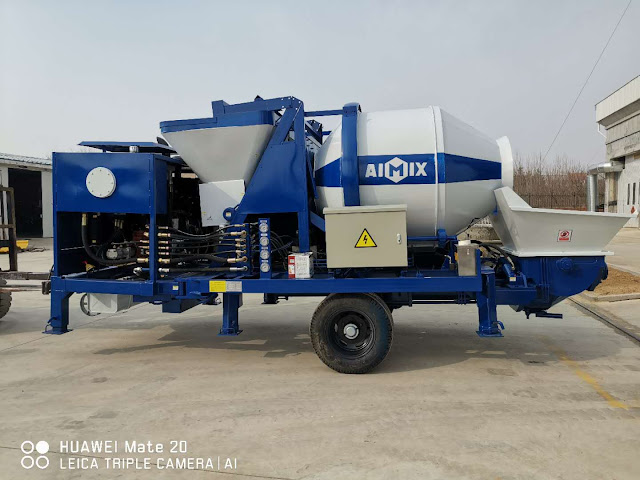How to Choose an Aggregate Batching System for a Concrete Plant?
Choosing the right aggregate batching system is a critical decision when setting up or upgrading a concrete batching plant. The system you select plays a crucial role in ensuring that your plant runs efficiently, produces high-quality concrete, and meets the demands of your projects. There are various factors to consider when selecting an aggregate batching system for a concrete plant, whether you are working with a large-scale facility or a mini concrete plant. In this guide, we will walk you through the key considerations to make an informed choice.
What Is an Aggregate Batching System?
An aggregate batching system is an essential part of a concrete batching plant(planta dosificadora de hormigon). It is responsible for storing, weighing, and batching the raw materials—such as sand, gravel, and crushed stone—that are mixed with cement and water to create concrete. The accuracy of this system directly impacts the quality of the finished concrete, as well as the efficiency of your plant’s operations. There are different types of aggregate batching systems available, each offering unique features and capabilities to meet various production needs.
Factors to Consider When Choosing an Aggregate Batching System
1. Type of Concrete Plant
One of the first things to consider is the type of concrete plant you are operating. If you are running a small-scale project or a mini concrete plant(mini planta de concreto), your aggregate batching system needs will differ from those of a large, stationary concrete batching plant. Smaller plants generally require simpler systems with lower capacity, while larger plants require more advanced and automated batching systems to handle higher production volumes. Consider how the system will scale with your production capacity and project requirements.
2. Accuracy and Consistency
The accuracy of the aggregate batching system is crucial to the overall quality of the concrete produced. A system that provides accurate and consistent batching ensures that the concrete mix meets the required specifications every time, which is essential for building durable structures. Look for a batching system that uses electronic or digital weighing systems to improve precision. The more accurate the system, the better your concrete will perform in terms of strength and durability.
3. Production Capacity
Assess your concrete production requirements when choosing an aggregate batching system. For high-demand projects or large construction operations, you’ll need a batching system with a high production capacity. Conversely, for smaller projects or mini concrete plants, a more compact system that offers lower capacity might be sufficient. Be sure to select a system that matches your daily concrete production needs to avoid overloading your equipment or underutilizing it.
4. Material Storage and Handling
Material storage and handling are other key considerations. Different types of aggregate batching systems have varying methods for storing and feeding raw materials into the batching process. Some systems use silo-based storage, while others rely on hopper systems. Consider the space available at your site and the materials you will be working with. Efficient material handling systems help to reduce downtime and increase overall plant productivity.
5. Automation and Control Systems
Modern aggregate batching systems often come equipped with advanced automation and control systems that can improve efficiency and reduce human error. Features like automated batching, real-time monitoring, and remote control allow operators to oversee the entire batching process and make adjustments as needed. If you are managing a high-volume concrete plant(planta de hormigón en Chile), automation can be a game-changer. However, for smaller concrete plants or mini concrete plants, a simpler control system may be more cost-effective while still providing the essential functions you need.
6. Durability and Maintenance
Durability is another important factor in choosing an aggregate batching system. A reliable system made from high-quality materials will require less maintenance and can withstand the wear and tear of continuous use. The better the durability, the less downtime you’ll experience, which ultimately leads to improved productivity. Additionally, ensure that the system you choose has easily accessible components for maintenance and that the manufacturer offers support for repairs and spare parts when needed.
7. Cost and Return on Investment
Like any equipment purchase, the cost of an aggregate batching system is a significant consideration. While you want to keep costs within your budget, it’s essential not to compromise on quality and functionality. A more expensive system may offer superior accuracy, efficiency, and durability, leading to lower maintenance costs and better performance in the long run. Calculate the return on investment (ROI) by considering both the initial cost and the long-term benefits, such as improved concrete quality and reduced downtime.
Conclusion
Choosing the right aggregate batching system for your concrete batching plant is essential for ensuring that your operation runs smoothly and that you produce high-quality concrete. Consider factors such as the type of concrete plant, accuracy, production capacity, automation, material handling, durability, and cost. By carefully evaluating your needs and selecting a system that aligns with your goals, you can make a wise investment that will serve your business for years to come.
Whether you're looking for a large-scale concrete batching plant or a mini concrete plant, it’s important to choose a batching system that meets the specific demands of your projects. Doing so will help you optimize your concrete production and ensure the long-term success of your business.




Comments
Post a Comment